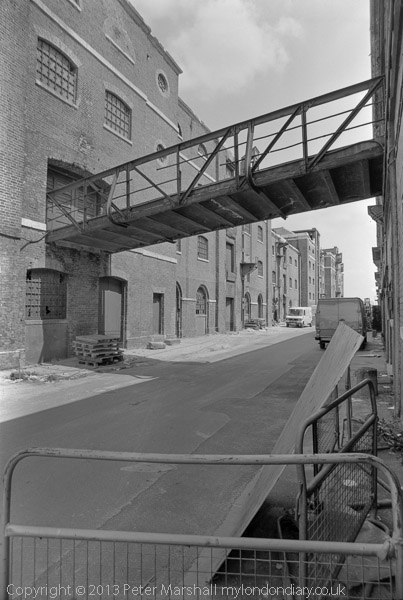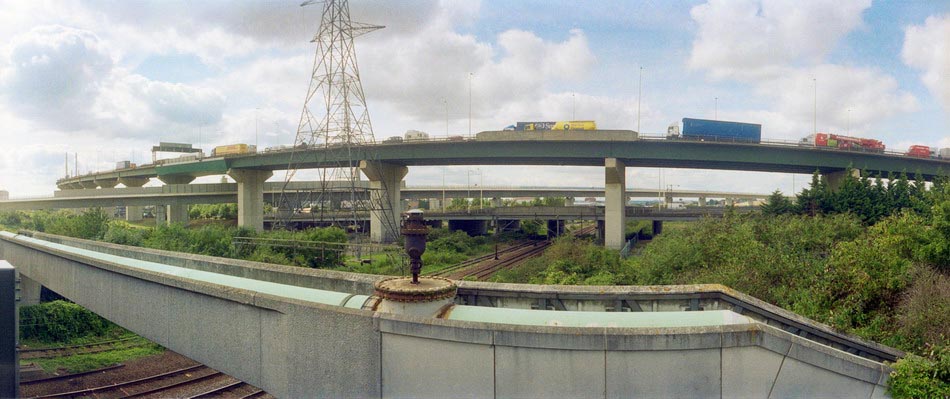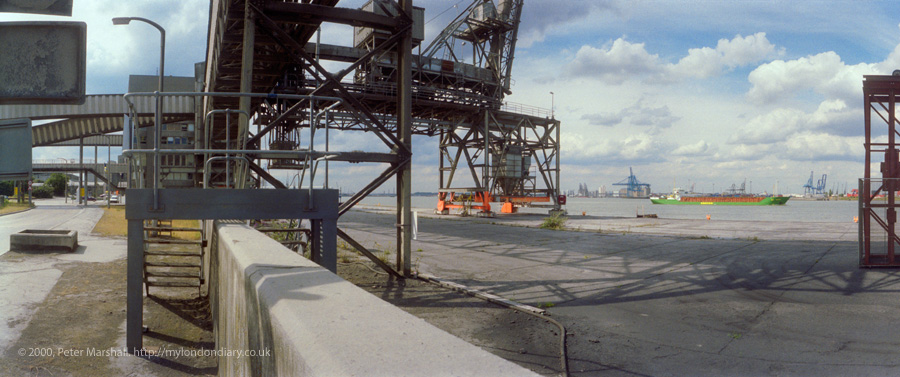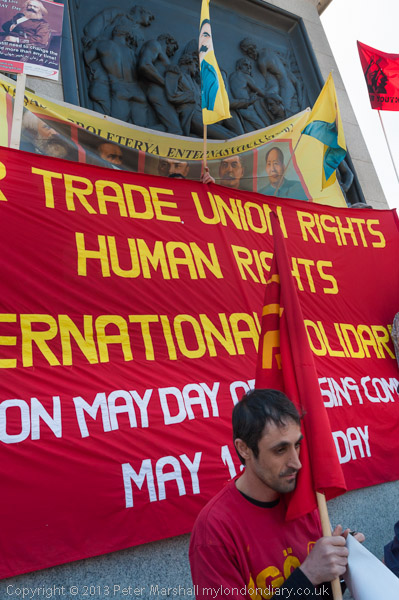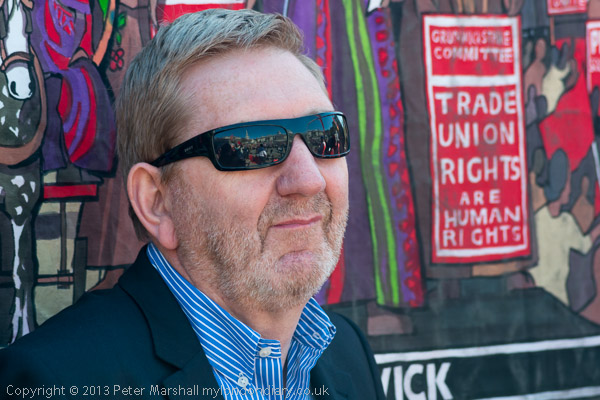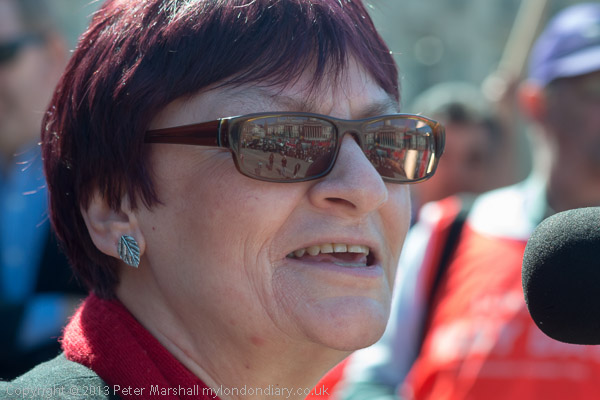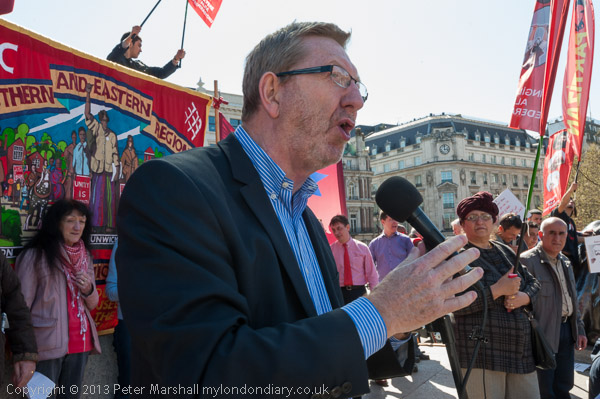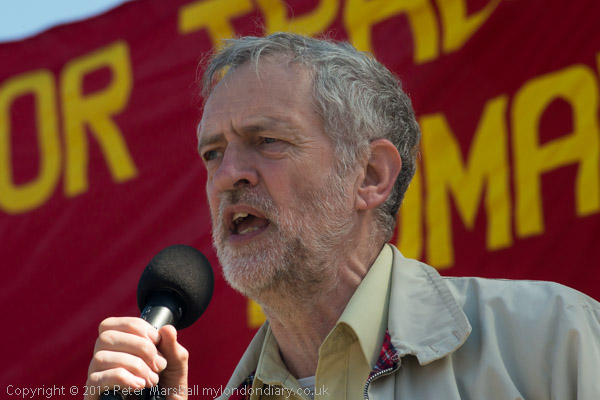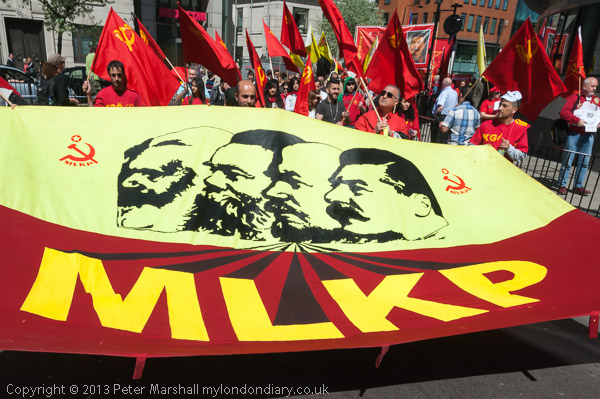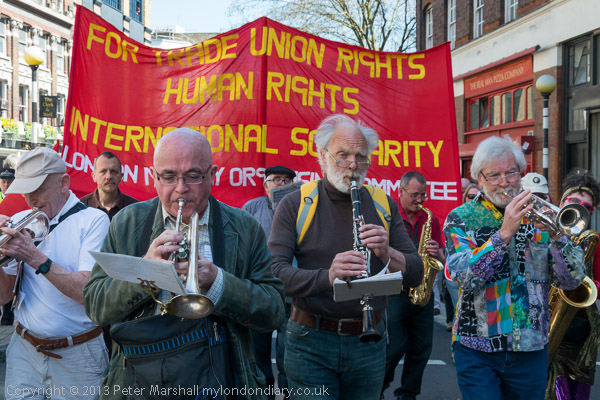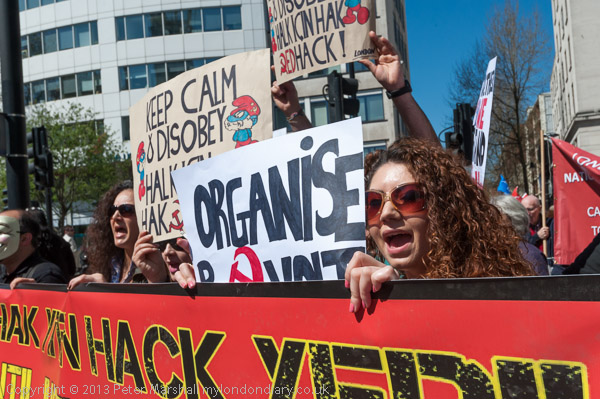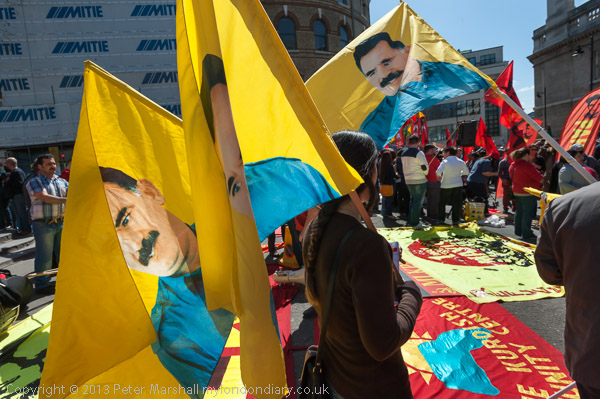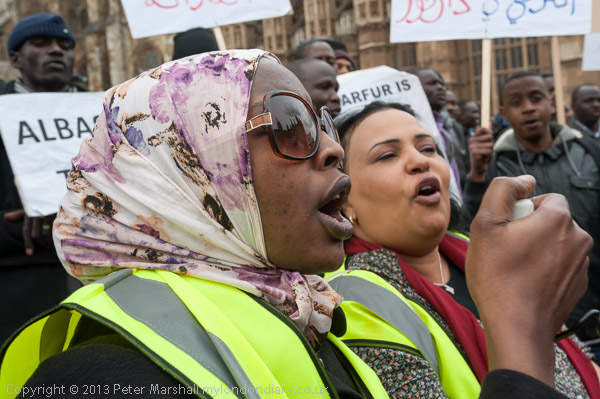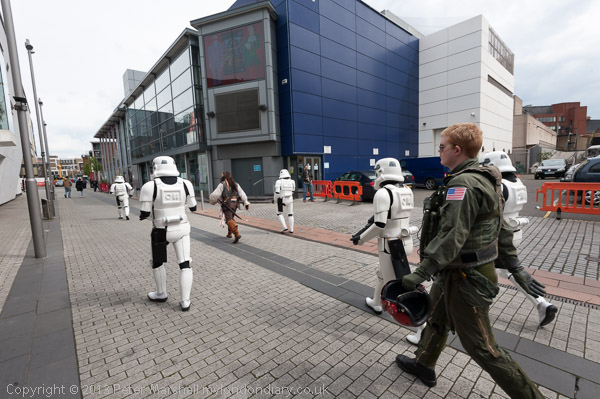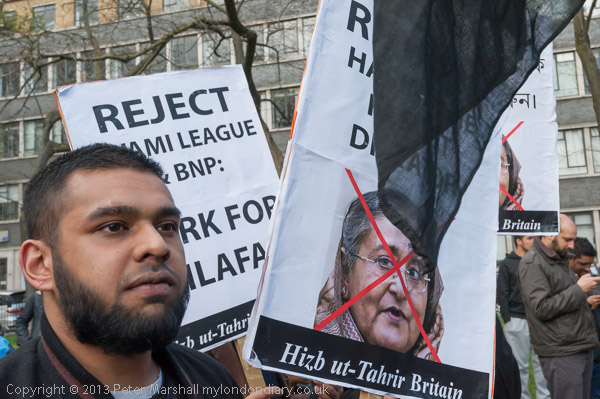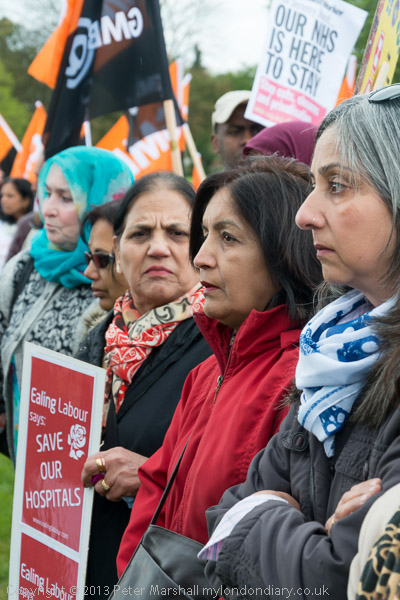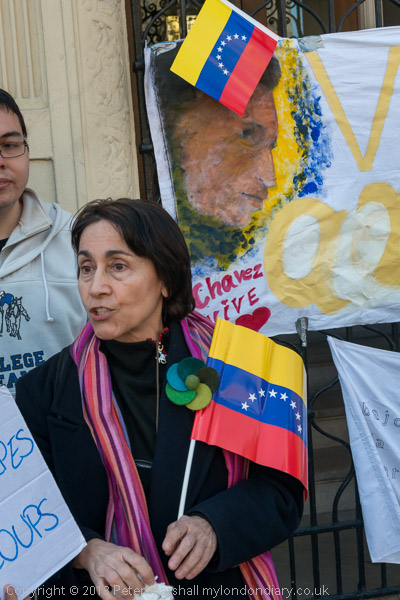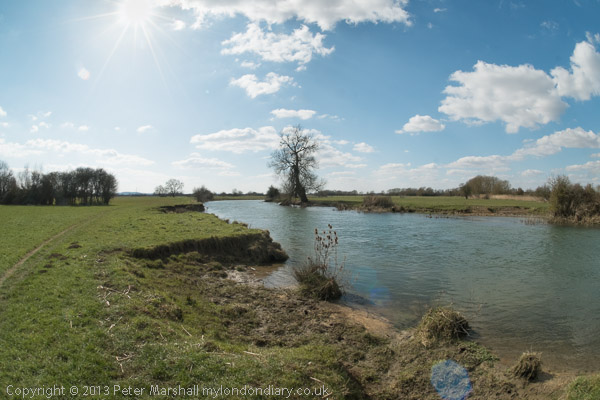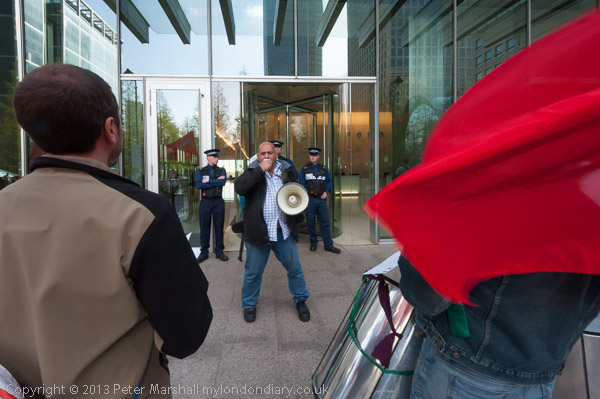
Cleaners’ leader Alberto Durango in front of Clifford Chance – a portrait format might have worked better?
I was a little worried at the prospect of photographing the cleaners protest at Canary Wharf. It’s one of these large private estates complete with its own law force who dress in a way that might get anyone else arrested for impersonating a police officer, and one with a record for harassing photographers.
My own problems there go way back, with various arguments with security while the site was being redeveloped when I would find myself arguing with security men. Then I was usually able to remind them I was standing on the public highway and had a right to take photographs if I wanted, and would suggest they called the police if they had a problem with that. But now, the whole Canary Wharf estate is private property – including the highways – and you have no legal right to take pictures.
I’ve twice had problems with taking pictures there more recently. Once when I was photographing a war memorial hidden away on one of the dockside walkways and they thought I must be planning some kind of robbery (they’d never noticed the memorial) and another time when I tried to photograph a bunch of security men beating up a drunk who they’d thrown out of one of the bars. But although I’ve heard many stories of other photographers getting stopped, I’ve also taken students there and run a couple of photo workshops in the past without permission – and on rather more occasions walked around myself taking photographs without getting bothered – as do many tourists every day. Generally if you don’t go into unusual places or use a tripod and keep a fairly low profile they don’t seem to bother you.
Protest is also banned at Canary Wharf. So the cleaners’ action hadn’t been advertised in advance outside their group, and phone calls to a few photographers and videographers the group trusted had told us where they would meet up to travel to the protest.
I was only slightly worried. The worst I expected was to be escorted off the premises, so there was just a chance it would be a waste of time. In the event I had no problems at all and the whole thing went very smoothly, as you can see from the pictures at Cleaners at Clifford Chance.
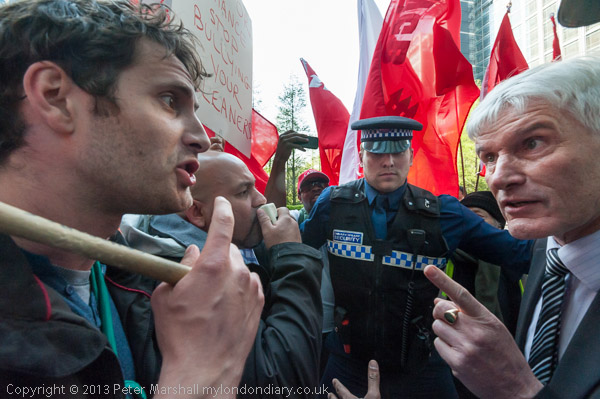
There was a fairly intense confrontation between the cleaners and the man at the right, who I think is Canary Wharf’s Head of Security. I’d photographed him before in 2007 when the Space Hijackers held their ‘Suited & Booted’ May Day party there. But neither then or on this occasion was I asked to stop taking pictures or to leave. And as you can see from this extreme wide-angle image I was very close to him.
I think the rules are generally simple. Even on private land you can take pictures, but if requested by the owner or a representative of the owner of the land to stop you should do so. I would only defy such a request if there was a clear public interest involved that I felt obliged me to do so – for example to secure evidence of a crime being committed. But any pictures that I take before being asked to stop can’t be required to delete and can use.
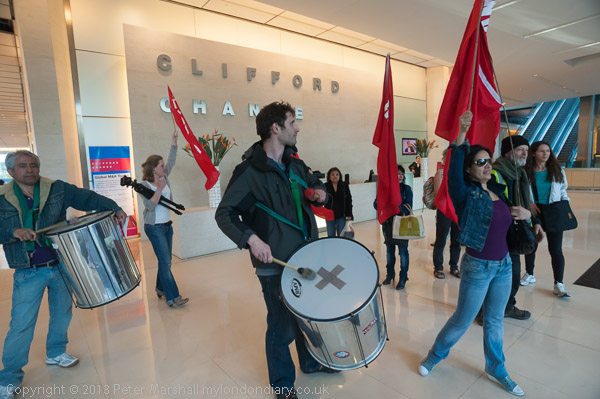
It was important to get the name ‘Clifford Chance’ as well as some of the protesters
When the cleaners went into the building I went in with them. Had anyone tried to stop me I would have stopped, and if I was asked to leave I would leave. But no one asked me. They did ask the cleaners, and when after a short delay they left, I left with them. But events like this are certainly ones I would be doubtful about photographing without a UK Press Card.
The cleaners had been briefed before the protest about how they should behave, and they were better briefed than some of the security staff who did at times start pushing people around. The cleaners made a lot of noise, made their point clear, showed they were angry but kept calm and simply shouted when a woman was hit, telling the security they had no right to do that.
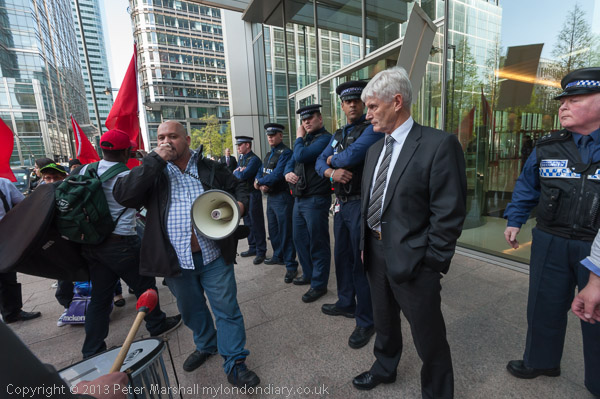
Alberto Durango speaks at the end of the protest as security look on
The Head of Security did quite a bit of shouting and pointing, some of which you can see in my pictures, but eventually saw and talked sense, telling the protesters they had to leave. Fine, said the protesters, we’ll finish our protest and then leave. It ended with a row of security men across the front of the building, standing back and watching the protest for a few minutes before they marched away for a short meeting close to the tube station entrance before going down the stairs into the station.
Photographically there were few problems, with largely good light with a lot reflected into the shadows from the tall glass-sided buildings. I didn’t need fill flash most of the time, which was just as well as when I tried it, I couldn’t get the exposure right, with burnt out highlights. It was only a problem as the cleaners marched away, with a fairly low sun right behind them – so there are no pictures from this short part of the protest in Cleaners at Clifford Chance. It wasn’t a great problem. Later, as I described in Too Much Control? I found the problem – an incorrect setting for Custom Setting e1, the flash synch speed.
Continue reading Cleaners Visit Canary Wharf




